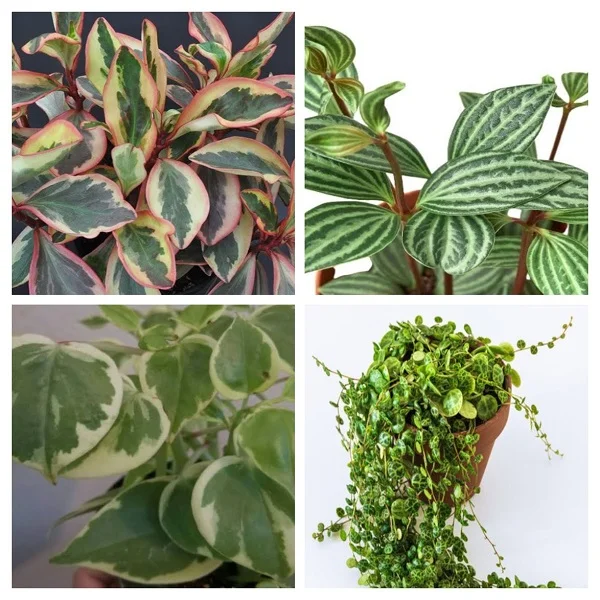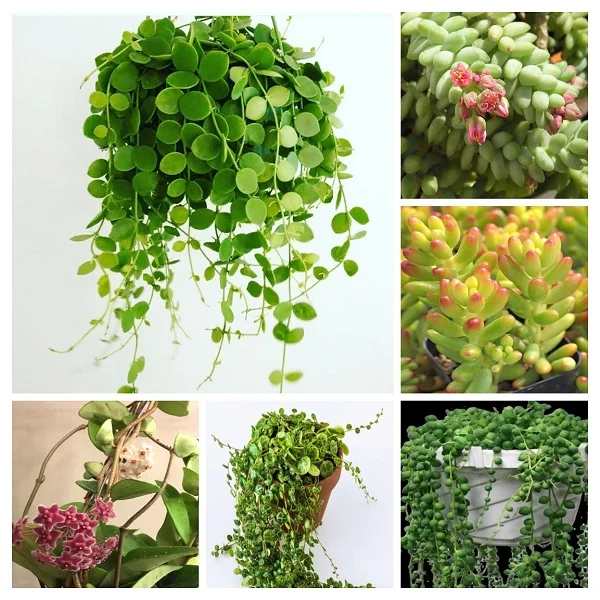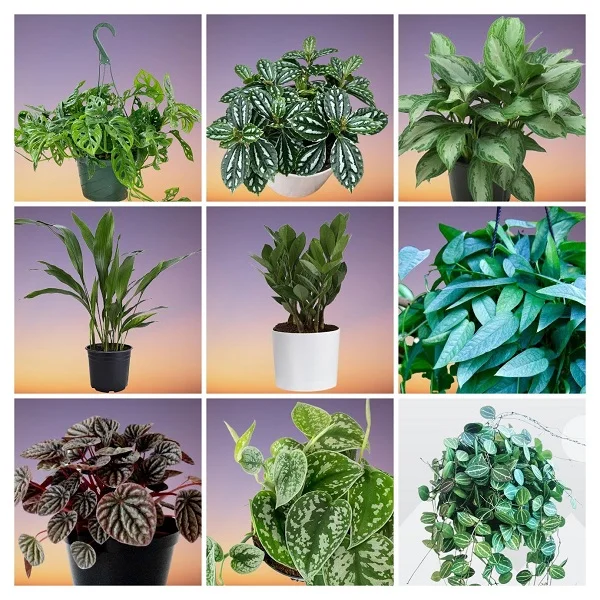Pearly Peperomia (Peperomia columella) Indoor Care, Propagation and Common Problems
Some links in this post may be affiliate links
Pearly Peperomia (Peperomia columella) prefers bright indirect light, average warmth, moderate humidity and moderately moist, fertile, well-drained soils coupled with monthly feeding in the growing season.
Peperomia columella also called Columnar Peperomia is one of the popular Peperomia varieties and bears fleshy, upright stems from which arise tightly packed, alternately arranged, succulent leaves.
The stems are the height of about 20 cm and branch profusely at the base to give rise to a multitude of upright stems. They look like columns and hence the common name, 'Columnar Peperomia'. Columella is the Latin word for little columns.
Columnar Peperomia leaves are fleshy, bright-green and bear the shape of a horseshoe. At the leaf apex is a transparent window through which light gets to the photosynthetic tissue. The transparent windows are water storage structures which come in handy in the drought conditions placing this plant among the best plants with low water needs.
In the beginning, the stems in Pearly Peperomia grow upright and later become pendant, making it perfect for cascading in a hanging basket, tabletop, pedestal or plant shelf. It is one of the best plants for a hanging basket.

Botanical name: Peperomia columella
Family: Piperaceae
Common names: Pearly Peperomia, Columnar Peperomia
Origin
Peperomia columella species is endemic to the deserts of western South America.
Flower
Under bright light, Pearly Peperomia may produces rat-tail like inflorescence.
Is Pearly Peperomia toxic?
Peperomia columella like other Peperomia Plants is non-toxic to humans and pets. They are among the pet-safe plants for the home.
Peperomia columella Care Indoors
Pearly Peperomia (Peperomia columella) flourishes in bright indirect light away from direct sunlight, average warmth of 15-260C, moderate humidity of 50-55% and moderately moist, fertile, well-drained, succulents soils coupled with monthly feeding during the growing season.
Peperomia columella requires regular pruning to keep the plant neat, to encourage a bushy compact growth as well as minimize pest and disease infestations. Repotting is only needed when the plant becomes extremely pot-bound as it grows best when the roots are confined. Keep reading for more on these growing conditions and how to achieve them.

Watering
Water Pearly Peperomia liberally during the growing season and allow the top 2-3 inches of soil to dry out between waterings to keep the soil moderately moist.
Significantly cut down on watering during the cold season to keep the soil barely moist as growth is minimal at this time.
Make sure that the pot has a drainage hole to prevent the soil from getting soggy as it can lead in root-rot and eventual death of the plant. Learn more on how to water houseplants the right way.
Light Requirements
Pearly Peperomia grows best in bright indirect light (filtered light). Keep it away from direct sunshine as it can lead to scorching of the leaves.
Too little light will result in a leggy plant which is an attempt by the plant to reach the light source. Where the natural light is not adequate, you may grow the plant under grow lights. Take a look at these full spectrum grow lights on Amazon.
Regularly turn the pot to ascertain that the plant receives light on all sides for uniform growth and also prevent leggy growth.
Temperature and Humidity
Pearly Peperomia requires an average warmth of 15-260C. A room temperature that is comfortable for you is ideal for these plants.
If the temperatures are outside this range, they impact the growth of the plant negatively. Keep it away from cold drafts as they can cause leaf drop and reduced growth.
Pearly Peperomia thrives in average room humidity of 50-55%. It has no need for extra humidity. Ensure that there is good air circulation to discourage fungal diseases.
Fertilizer
Feed Pearly Peperomia with a balanced, liquid fertilizer every 4 weeks during the growing period. Withhold feeding in the cold season as growth is minimal and feeding at this time may lead to fertilizer burn.
Potting Soil
The best potting soil for Pearly Peperomia should be rich in organic matter and free-draining to prevent it from getting soggy while providing the required nutrients. Cactus and succulents soil is ideal for this plant.
Repotting
Repot Pearly Peperomia during the growing season only when the plant has become extremely pot-bound as it grows best when the roots are confined. Use a pot one size larger than a current one and ensure that the pot has a drainage hole to prevent the soil from getting soggy as it can lead to root-rot.
A terracotta is preferable for this plant as it is porous and allows water to drain faster. This prevents the soil from holding too much water. Take a look at these terracotta pots with saucer on Amazon.
Pruning
Pruning Pearly Peperomia involves regular removal of dead foliage to maintain the plant neat and tidy as well as minimize pest and disease infestations. As the plant ages, it becomes straggly, therefore, cutback the stems during the growing season to rejuvenate growth.
Propagation
Pearly Peperomia (Peperomia columella) propagation can be done in 3 ways; from leaf-cuttings, from stem-cuttings or by plant division.
1. How to propagate Pearly Peperomia from leaf cuttings in water
The leaf cuttings root easily, therefore there is no need for a rooting hormone. Take leaf cuttings from a healthy Pearly Peperomia Plant and ensure each leaf cutting has a petiole.
Allow sometime for the formation of a protective callus tissue over the cuts of the leaf cuttings to prevent rotting.
Place the leaf cuttings in a jar of clean plain water and change the water every 5-7 days.
Position the set up in a warm, well-lit place until growth begins at the base of the cuttings leaf petiole.
Allow enough time for substantial growth of the roots and new leaves before transplanting.
Transfer the rooted leaf cuttings to individual pots and place in a warm, well-lit place away from direct sunlight.
Maintain the soil moist until the new Columnar Peperomia plants are well established after which routine care can begin.
For a fuller plant, transfer several plants in one pot.
2. How to propagate Pearly Peperomia from stem cuttings
Take stem cuttings of about 4-5 inches length from a healthy Pearly Peperomia and ensure each cutting has at least 2 sets of leaves. The stem-tip cuttings root easily, therefore, there is no need for a rooting hormone.
Allow some time for the formation of a protective callus tissue over the cuts of stem cuttings to prevent rotting.
Insert the cuttings in moist rooting soil and place in warm, well-lit place away from direct sunlight.
Maintain the soil moist until new growth emerges and substantial growth has been observed.
Transfer the rooted stem cuttings to individual pots and begin routine care. For a fuller Columnar Peperomia Plant, transfer several cuttings in one pot.
3. How to propagate Pearly Peperomia Plants by division
Water the Pearly Jelly thoroughly at least 1 day before to make it easier to divide and also hasten establishment; a well hydrated plant suffers less shock and takes a shorter time to take root.
Slip the plant out of its pot and divide it into several sections and ensure each section has enough roots.
Pot these sections in individual pots and place in a warm, well-lit place away from direct sunlight.
Maintain the soil moist until new growth emerges on the sections.
Allow the new Pearly Peperomia Plants to be well established before transplanting after which you can begin routine care.
Related: How to Propagate Radiator Plants (4 Easy Methods of Peperomia Propagation)

Peperomia columella Problems with Fixes
Pearly Peperomia (Peperomia columella) problems include drooping leaves, leaf drop, brown leaf tips and edges, shrivelled leaves, pests and diseases among others. Keep on reading for more on these problems and how to fix them.
Drooping leaves
Pearly Peperomia leaves may wilt and begin to droop due to a number of reasons like underwatering, overwatering, wrong temeperatures, poor quality soil, improper feeding, pests and diseases among others.
Check out this post on 14 reasons why Peperomia is drooping leaves and how to fix them
Dropping leaves
There are many and varied causes of dropping leaves in Pearly Peperomia. One possible cause of dropping leaves is that the temperature is too low. Move the plant to a warmer spot away from cold drafts and maintain an average temperature of 15-260C.
The second possible cause of dropping leaves in Columnar Peperomia is that the plant has been underwatered causing the foliage to wilt and drop. Water the plant liberally during the growing season and allow the soil to dry out between waterings but decrease watering in the cold season and do not allow the soil to dry out completely.
Read more on these 12 reasons why Peperomia is dropping leaves (with solutions)
Pests
Common pests in Pearly Peperomia are spider mites, whiteflies, scale insects and mealy bugs. Isolate the affected plant to prevent spread to other plants. Treat it with neem oil or insecticidal soap as per the manufacturer's instructions.
Diseases
Leaf spot disease is common in Pearly Peperomia. The disease is characterized by brown, moist spots on the foliage. In a serious attack the spots can enlarge and merge, killing the whole leaf. Isolate the affected plant and treat it for the disease. Learn how to treat leaf spot disease in indoor plants.
Wilted and discolored leaves and corky swellings under the leaves
Soggy soil for Pearly Peperomia is the cause of wilted and discolored leaves and corky swellings under the leaves. This is an indication of root-rot. Isolate the affected plant and treat it for the disease. Read on how to treat root-rot in houseplants.
Leggy stems
Leggy stems in Pearly Peperomia are due to low light. Cutback the stems to rejuvenate growth and move the plant to a brighter spot where it will receive bright indirect light (filtered light) or grow it under grow lights if the natural light is not adequate. Check out this guide on understanding light for houseplants.
Brown leaf tips and edges
Brown leaf tips and edges in Pearly Peperomia are due to sudden drop in temperature from cold drafts. Remove all the damaged leaves and keep the plant away from cold drafts to maintain an average warmth of 15-260C. Check out this guide on understanding temperature for houseplants.
Dry and shrivelled leaves
Dry and shrivelled leaves in Pearly Peperomia are due to excess soluble salts in the soil from the water or excess feeding. To get rid of accumulated salts from the soil flush them out by running a stream of water through the soil until it comes out through the drainage holes and repeat the process several times.
You liked it? Share on social media.
Related Content
Amazon Associates Disclosure
Homeplantsguide.com is a participant in the Amazon Services LLC Associates Program, an affiliate advertising program designed to provide a means for sites to earn advertising fees by advertising and linking to amazon.com.





